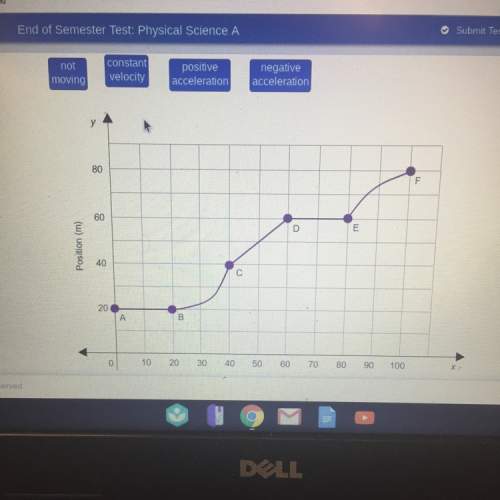
Physics, 14.10.2019 12:10 airiyannag0113
A) you have a thin converging lens whose focal length is 0.5 m and a sheet of white paper on which to display a real image of a small tree that is 4 m tall and 49 m away. how far in back of the lens should you place the paper in order to get a sharp image of the tree? how tall is the image of the tree? b) a spotlight mounted beside a swimming pool sends a beam of light at an angle into the pool. the light hits the water a distance x = 2.8 m from the edge of the pool. the pool is d = 2 m deep and the light is mounted h = 1.2 m above the surface of the water. how far from the edge of the pool is the spot of light on the bottom of the pool? (the diagram is not drawn to scale.) indices of refraction: water: 1.33; air: 1.00029angle of the beam from the normal in the airangle of the beam from the normal in the waterdistance of spot from edge of pool

Answers: 3


Other questions on the subject: Physics

Physics, 21.06.2019 23:00, alanisalvarez2000
Follow these directions and answer the questions. 1. set up the ripple tank as in previous investigations. 2. bend the rubber tube to form a "concave mirror" and place in the ripple tank. the water level must be below the top of the hose. 3. generate a few straight pulses with the dowel and observe the reflected waves. do the waves focus (come together) upon reflection? can you locate the place where the waves meet? 4. touch the water surface where the waves converged. what happens to the reflected wave? 5. move your finger twice that distance from the hose (2f = c of c, center of the curvature) and touch the water again. does the image (the reflected wave) appear in the same location (c of c)? you may have to experiment before you find the exact location. sometimes it is hard to visualize with the ripple tank because the waves move so quickly. likewise, it is impossible to "see" light waves because they have such small wavelengths and move at the speed of light. however, both are examples of transverse waves and behave in the same way when a parallel wave fronts hit a curved surface.
Answers: 1

Physics, 22.06.2019 03:00, jdkrisdaimcc11
Do you agree with scientist’s prediction about the warming of alaska and other polar regions?
Answers: 2

Physics, 22.06.2019 04:30, tayveon122
Light that is polarized along the vertical direction is incident on a sheet of polarizing material. only 96% of the intensity of the light passes through the sheet and strikes a second sheet of polarizing material. no light passes through the second sheet. what angle does the transmission axis of the second sheet make with the vertical?
Answers: 2

Physics, 22.06.2019 07:50, dimondqueen511
Calculate the ratio of h+ ions to oh– ions at a ph = 6. find the concentration of h+ ions to oh– ions listed in table b of your student guide. then divide the h+ concentration by the oh– concentration. record this calculated ratio in table a of your student guide. compare your approximated and calculated ratios of h+ ions to oh– ions at a ph = 6. are they the same? why or why not? record your explanation in table a. what is the concentration of h+ ions at a ph = 6? mol/l what is the concentration of oh– ions at a ph = 6? mol/l what is the ratio of h+ ions to oh– ions at a ph = 6? : 1
Answers: 1
You know the right answer?
A) you have a thin converging lens whose focal length is 0.5 m and a sheet of white paper on which t...
Questions in other subjects:

Mathematics, 14.08.2021 05:20


French, 14.08.2021 05:20

English, 14.08.2021 05:20

Mathematics, 14.08.2021 05:20

Chemistry, 14.08.2021 05:20

History, 14.08.2021 05:20



Mathematics, 14.08.2021 05:20




